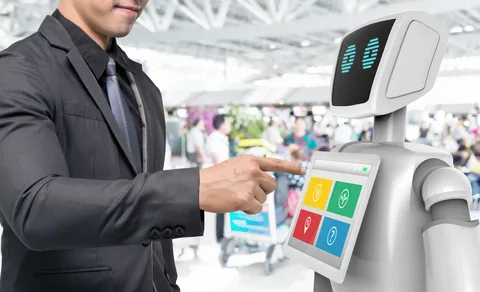Introduction
Retail customer experience, once primarily shaped by in-person interactions, has undergone a significant transformation with the integration of technology. In this article, we explore the evolution of retail customer experience and how technology has played a pivotal role in enhancing every aspect of the customer journey.
Personalization through Data Analytics
Data analytics allows retailers to gain insights into customer preferences and behaviors. Personalized recommendations based on past purchases, browsing history, and demographics create a tailored shopping experience, increasing customer satisfaction and loyalty.
Seamless Omnichannel Experiences
Technology enables a seamless integration of various shopping channels. Customers can transition effortlessly between online and offline platforms, with their preferences and information carried across channels. This omnichannel approach provides consistency and convenience.
Augmented Reality and Virtual Reality Applications
AR and VR technologies enhance the retail experience. Customers can virtually try on clothing, visualize furniture in their homes, or explore products in immersive ways. This not only adds a layer of excitement but also reduces the uncertainty associated with online shopping.
Smart Shelves and Interactive Displays
Smart shelves equipped with RFID technology streamline inventory management and enhance the in-store experience. Interactive displays offer additional product information, reviews, and suggestions, providing customers with a more engaging and informative shopping environment.
Contactless Checkout Solutions
Contactless checkout, facilitated by technologies like RFID tags and mobile payments, minimizes waiting times and enhances the overall shopping experience. The convenience of a quick and secure checkout contributes to customer satisfaction.
Customer Service Chatbots
Chatbots powered by artificial intelligence provide instant assistance to customers. They can answer queries, guide customers to products, and even handle simple transactions. This ensures that customers receive prompt and consistent support.
Convenience and Speed of Online Shopping
E-commerce has redefined convenience for customers. The ability to browse and purchase items from the comfort of their homes, coupled with fast and reliable delivery options, has become an expectation. Technology ensures a seamless online shopping experience.
Artificial Intelligence in Product Recommendations
AI algorithms analyze customer preferences and behaviors to offer accurate and relevant product recommendations. This not only aids customers in discovering new items but also increases cross-selling opportunities for retailers.
Customer Reviews and Social Proof
Technology enables customers to access and contribute to reviews and ratings. This social proof plays a crucial role in decision-making. Retailers can leverage positive reviews to build trust and address concerns based on feedback.
Balancing Personalization with Privacy
While personalization is valued, there is a delicate balance with customer privacy. Retailers must navigate this balance carefully, ensuring that data collection is transparent, and customers have control over their information.
Transparency in Data Usage
Retailers need to be transparent about how customer data is used. Clearly communicating data usage policies builds trust and reassures customers that their information is handled responsibly.
Building Trust in Technology-driven Experiences
Building and maintaining trust is crucial. Retailers must prioritize security measures, communicate openly about cybersecurity practices, and address any concerns promptly to ensure customers feel secure in their interactions.
Integration and Compatibility Issues
Implementing various technologies can lead to integration challenges. Ensuring compatibility and seamless communication between different systems is crucial for a cohesive customer experience.
Staff Training and Adaptation
Retail staff must adapt to new technologies. Proper training is essential to ensure that employees can effectively use and troubleshoot technology, providing customers with the assistance they need.
Cybersecurity Concerns
As technology reliance increases, so do cybersecurity risks. Retailers must invest in robust cybersecurity measures to protect customer data and maintain the integrity of their systems.
Continuous Innovation and Adaptation
The retail landscape is dynamic. Continuous innovation ensures that retailers stay ahead of the curve. Adopting emerging technologies and adapting to changing customer expectations contribute to long-term success.
Gathering Customer Feedback for Improvement
Actively seeking customer feedback provides valuable insights. Understanding customer experiences with technology allows retailers to identify areas for improvement and fine-tune their strategies accordingly.
Collaborating with Technology Partners
Collaborating with technology partners ensures access to cutting-edge solutions. Establishing partnerships with tech companies allows retailers to leverage expertise and stay at the forefront of technological advancements.
Artificial Intelligence Advancements
AI will continue to evolve, offering more sophisticated capabilities. Advanced AI algorithms will enable retailers to provide even more personalized and predictive customer experiences.
Enhanced Personalization through Predictive Analytics
Predictive analytics will play a central role in anticipating customer needs. By analyzing historical data, retailers can proactively offer personalized recommendations and create targeted marketing strategies.
Sustainable and Eco-Friendly Technology Solutions
Sustainability is a growing concern. Future technology trends in retail will likely focus on eco-friendly solutions, including energy-efficient systems, recyclable packaging, and reduced environmental impact.
Conclusion
In conclusion, technology has revolutionized the retail customer experience, offering unprecedented levels of personalization, convenience, and engagement. Retailers that embrace and effectively implement technology are better positioned to meet the evolving expectations of customers. As technology continues to advance, retailers should remain agile, prioritize ethical considerations, and seek continuous improvement to deliver exceptional customer experiences.

